The ABS published their August 2014 data today, and on the surface the data appears to rebound from last months seasonally adjusted 6.4% to 6.1%, whilst the seasonally adjusted participation rate rose from 64.9 to 65.2
However, we need to be careful because the ABS introduced a new questionnaire in July 2014, so we cannot be sure how much of the change is due to a data shift. You can read all about the changes here. According to the ABS, the number of unemployed persons decreased by 33,500 to 755,100 in August 2014 following an increase of 41,800 in July 2014 (seasonally adjusted). In trend terms the number of unemployed persons in August 2014 increased by 8,000 to 764,100 and the unemployment rate was 6.2%. Because of the unusually strong increase in employment estimates, the ABS has extensively checked the data.
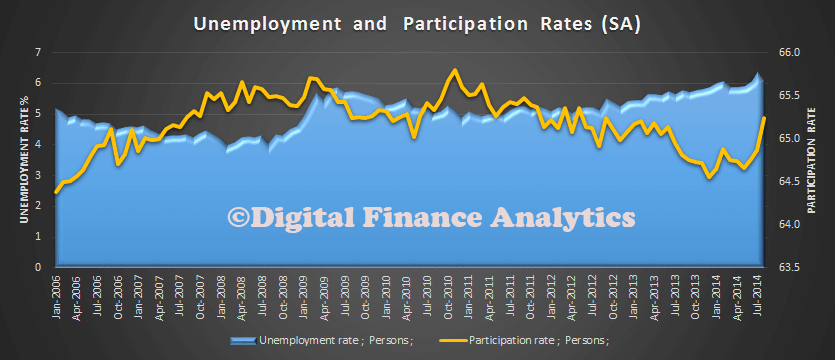 The seasonally adjusted number of employed persons increased by 121,000 in August 2014 to 11,703,500 persons following a decrease of 4,100 persons in July 2014. The increase in August was driven by part-time employment. The employment to population ratio, which expresses the number of employed persons as a percentage of the civilian population aged 15 years and over, increased 0.6 percentage points to 61.3% (seasonally adjusted).
The seasonally adjusted number of employed persons increased by 121,000 in August 2014 to 11,703,500 persons following a decrease of 4,100 persons in July 2014. The increase in August was driven by part-time employment. The employment to population ratio, which expresses the number of employed persons as a percentage of the civilian population aged 15 years and over, increased 0.6 percentage points to 61.3% (seasonally adjusted).
Unemployment amongst those aged 15-24 remains close to 15%
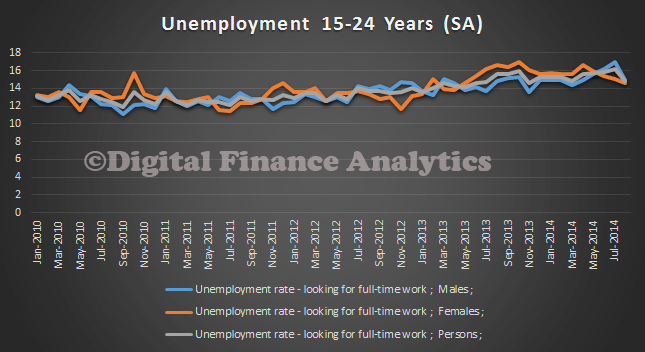 At a state level, the largest absolute decreases in seasonally adjusted unemployment were in South Australia (down 10,900 persons), New South Wales (down 5,400 persons) and Victoria (down 3,400 persons). The largest absolute increases in seasonally adjusted employment were in New South Wales (up 45,300 persons), Queensland (up 26,500 persons) and Victoria (up 26,100 persons). Tasmania had the largest increase in the seasonally adjusted participation rate (up 0.7 percentage points), followed by New South Wales (up 0.6 percentage points) and Queensland (up 0.5 percentage points). Seasonally adjusted estimates are not published for the territories.
At a state level, the largest absolute decreases in seasonally adjusted unemployment were in South Australia (down 10,900 persons), New South Wales (down 5,400 persons) and Victoria (down 3,400 persons). The largest absolute increases in seasonally adjusted employment were in New South Wales (up 45,300 persons), Queensland (up 26,500 persons) and Victoria (up 26,100 persons). Tasmania had the largest increase in the seasonally adjusted participation rate (up 0.7 percentage points), followed by New South Wales (up 0.6 percentage points) and Queensland (up 0.5 percentage points). Seasonally adjusted estimates are not published for the territories.
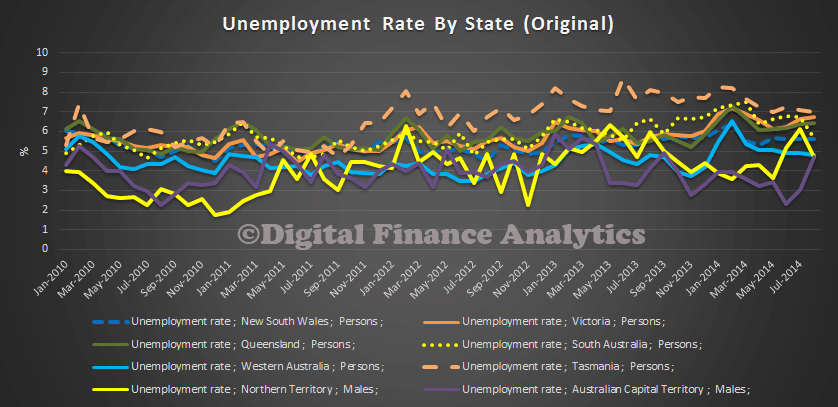 Looking at the latest month, males in Tasmania are most likely to be out of work. Females in NT, least likely.
Looking at the latest month, males in Tasmania are most likely to be out of work. Females in NT, least likely.
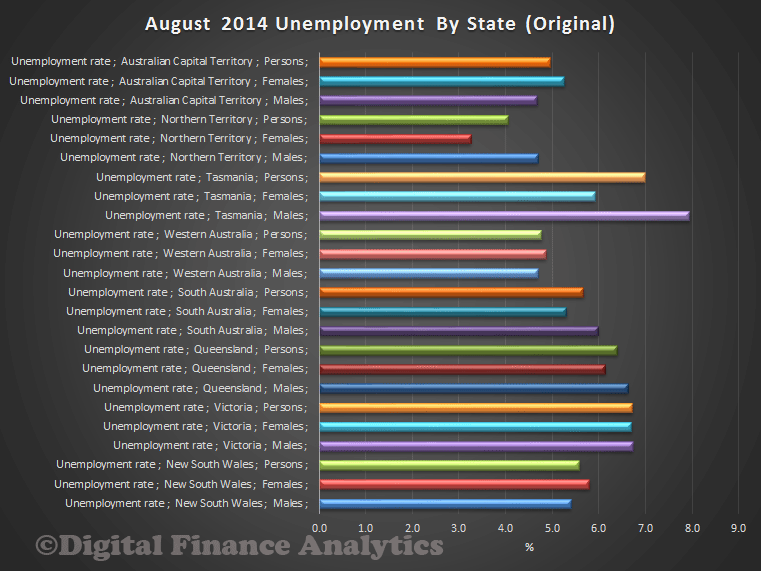 Finally, looking at underemployment by age ranges, younger people are seriously underutilised, and we see underutilisation in the over 55’s rising. The labour force underutilisation rate increased to 14.3% whilst seasonally adjusted estimated labour force undertuilisation rate increased 1.0 pts to 14.6%. The male labour force underutilisation rate increased 1.0 pts to 12.7%. The female labour force underutilisation rate increased 1.0 pts to 16.9%.
Finally, looking at underemployment by age ranges, younger people are seriously underutilised, and we see underutilisation in the over 55’s rising. The labour force underutilisation rate increased to 14.3% whilst seasonally adjusted estimated labour force undertuilisation rate increased 1.0 pts to 14.6%. The male labour force underutilisation rate increased 1.0 pts to 12.7%. The female labour force underutilisation rate increased 1.0 pts to 16.9%.
We will see if the data next month continues to reflect the revisions this time around.

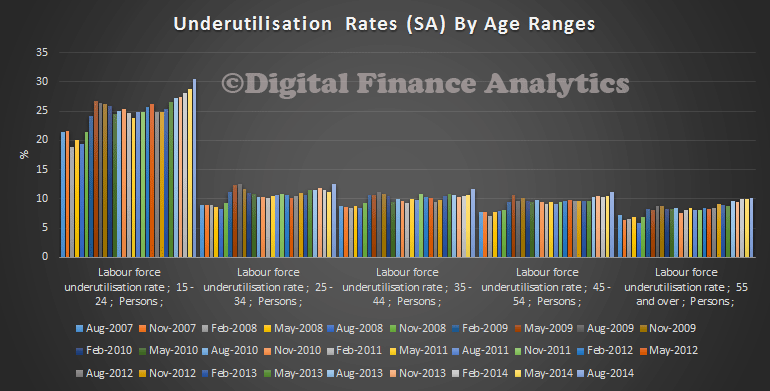
3 thoughts on “Unemployment Better Thanks To Method Change?”